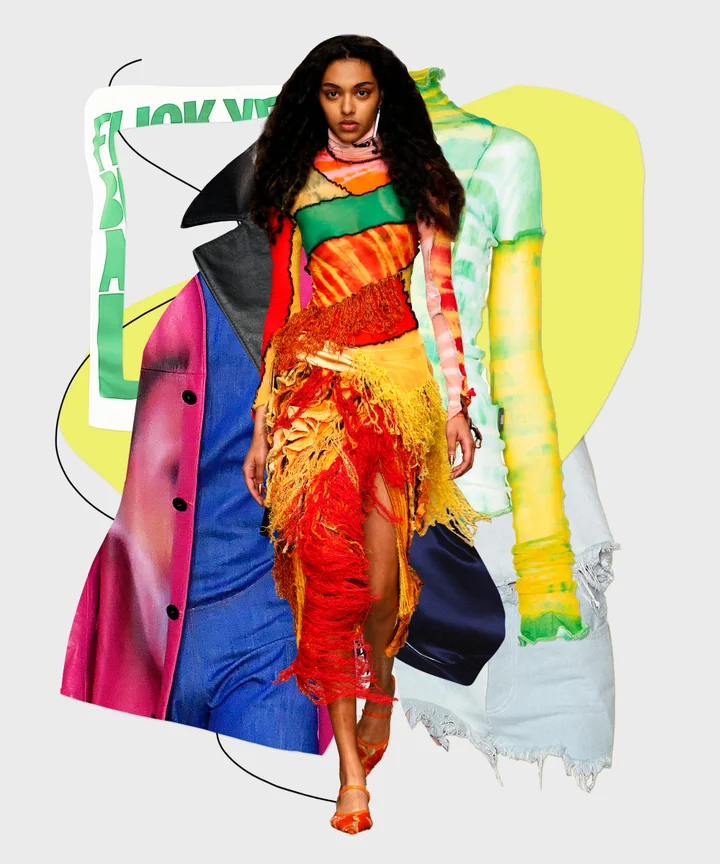Festive Season Fashion: Eastern Wear Pakistan Styles for Every Occasion
Wiki Article
Experience the Style of Traditional Eastern Outfit
Start a trip via the intricate world of standard Eastern clothing, where each garment narrates woven with social splendor and historical importance. From the lively hues of a Chinese qipao to the regal sophistication of a Pakistani shalwar kameez, these garments provide a glance into a globe where craftsmanship fulfills creativity. The combination of glamorous materials and fragile needlework methods develops a tapestry of beauty that transcends borders and time. Join us as we unwind the keys behind these charming items and discover the appeal of Eastern attire that has astounded generations.Background of Eastern Attire
Eastern attire has a rich background that dates back centuries, showing the diverse cultures and traditions of regions such as Asia and the Center East. In Asia, standard clothing varies substantially from the vibrant saris worn in India to the elegant bathrobe of Japan.Throughout history, Eastern outfit has not only served as a form of clothes but additionally as a symbol of social identity and heritage. Today, Eastern clothing continues to advance, blending traditional aspects with modern fashion patterns to create ageless and distinct designs.
Significance of Embroidery
Needlework plays an essential duty in traditional Eastern clothing, adding detailed details and cultural value to garments that have been given via generations. In Eastern societies, needlework is not merely attractive but holds deep symbolic meanings. Each stitch and pattern can convey tales, ideas, and also social condition.The art of needlework in standard Eastern clothing is a labor-intensive process that needs ability and persistence. Extremely experienced craftsmens carefully hand embroider intricate designs onto fabrics utilizing strategies that have been developed over centuries. These embroidered styles commonly reflect the abundant social heritage of the region they stem from, showcasing concepts influenced naturally, mythology, or historic occasions.

Luxurious Fabrics Used
Luxurious fabrics play a critical duty in enhancing the style and opulence of standard clothing across varied Eastern cultures. Silk, renowned for its gentleness and shine, is a preferred choice for several conventional garments due to its luxurious feeling and ability to curtain gracefully. In nations like India, China, and Japan, silk has a long background of being utilized in traditional clothes, representing wide range and condition.One more extensively utilized luxurious material is brocade, identified by complex patterns woven into the material. Brocade includes a touch of sophistication to garments and is usually seen in ceremonial attire and official wear. Velvet, with its Look At This luxurious texture and rich look, is likewise a preferred selection for standard clothes in Eastern societies, specifically for cheery occasions and special occasions.
In addition, chiffon, organza, and satin are frequently utilized for their running and light-weight qualities, including a sense of delicacy and elegance to garments. These extravagant textiles not just elevate the aesthetic appeal of conventional Eastern clothes yet additionally add to the general appeal and beauty of the user.
Craftsmanship Techniques
Conventional outfit in numerous societies showcases impeccable craftsmanship techniques that are passed down with generations, highlighting the ability and artistry associated with producing these charming garments. Each stitch, embellishment, and needlework is thoroughly crafted to develop timeless items that personify the social heritage and traditions of the area. The workmanship techniques made use of in traditional Eastern attire frequently involve detailed handwork, such as hand weaving, hand needlework, and hand beading, which require accuracy and focus to detail.Artisans that focus on these techniques undertake years of training to best their skills and understand the standard methods of garment construction. The usage of top notch materials incorporated with professional craftsmanship causes garments that not only look aesthetically sensational however also stand the examination of time. The commitment to preserving these workmanship methods ensures that each item of standard Eastern outfit is an artwork, mirroring the abundant cultural history and heritage of the region.
Ageless Beauty and Elegance

The elaborate embroidery, delicate beadwork, and extravagant textiles utilized in standard Eastern outfit add to its unequaled appeal. The precise creation gave with generations guarantees that every item emanates and tells a story elegance and grace.
Furthermore, the classic silhouettes and elegant draping of typical Eastern clothes include in its enduring appeal. The flowing lines and elegant layouts develop a feeling of get more harmony and equilibrium that is both visually enticing and emotionally fascinating.
In significance, the timeless beauty and appeal of traditional Eastern outfit work as a testimony to the ability and artistry of the craftsmen who devote their lives to protecting these exquisite like it sartorial customs. - eastern wear pakistan
Final Thought
To conclude, the elegance of conventional Eastern outfit is a testament to the abundant background, social significance, and intricate craftsmanship of the region. From the sophisticated needlework to the elegant materials and ageless appeal, each garment narrates and reflects the cultural identity of its beginnings. Welcoming Eastern outfit permits one to value the artistry and beauty that have actually been passed down through generations, producing genuinely elegant and exciting pieces.Embark on a journey through the complex globe of typical Eastern attire, where each garment informs a tale woven with social splendor and historical relevance.Needlework plays an essential role in conventional Eastern attire, adding intricate information and cultural significance to garments that have been passed down via generations.Elegant materials play a critical function in improving the beauty and opulence of conventional clothes throughout varied Eastern cultures. The craftsmanship techniques used in standard Eastern clothing usually entail detailed handwork, such as hand weaving, hand embroidery, and hand beading, which call for precision and attention to detail.
In conclusion, the beauty of standard Eastern clothes is a testimony to the abundant background, cultural relevance, and elaborate craftsmanship of the area.
Report this wiki page